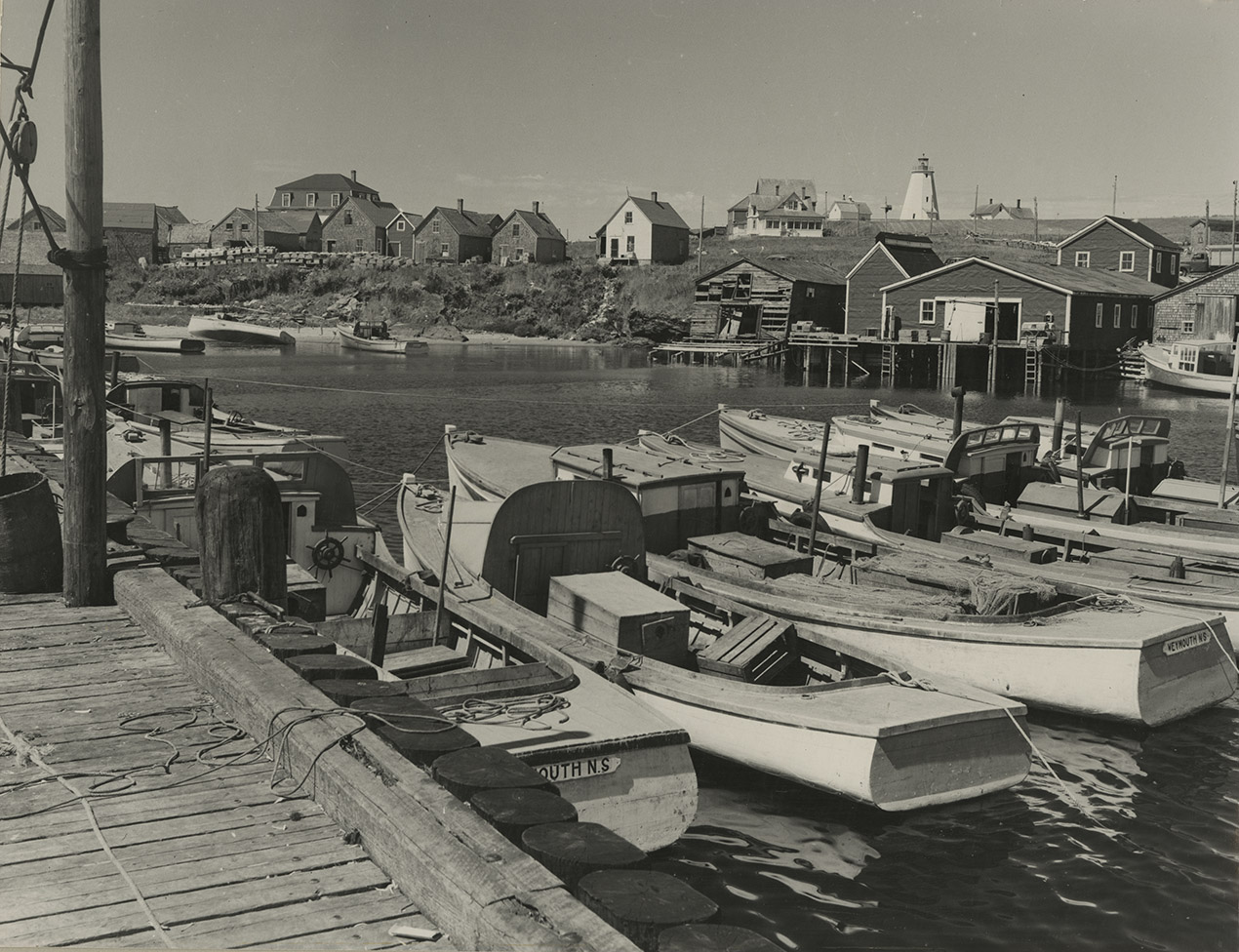Council of Nova Scotia Archives
Centre Acadien, Université Sainte-Anne
Fishermen's cabins and Cape Islanders in Cape Saint Mary’s, NS
Fisherman's cabins – In the early twentieth century, fishermen huts were numerous in Clare, as in many other Nova Scotian coastal communities. Located near wharves, these small wooden buildings once housed fishing equipment, such as sturdy ropes used for lobster traps. This was also where fishing bait was prepared and stored, particularly during lobster fishing season. Some still remember the strong odour of rotten fish that sometimes emanated from these cabins.
Some fishermen spent hours in these huts preparing for the next fishing season. Their activities included repairing broken nets and traps, or painting their buoys. Others would use these huts to salt fish, such as cod or herring. Dried fish became fishermen’s top export product, and one which continues to be enjoyed by local residents.
These huts also served as meeting places, especially when fishermen could not go out to sea due to inclement weather. In addition to telling stories, fishermen expressed their opinions and participated in political debates.
Until the beginning of the twentieth century, our ancestors fished in small boats, locally referred to as "barchettes". Around 1905, the motorboat was introduced to Clare. It would soon be replaced by a coastal fishing boat design, adapted to local conditions, named "Cape Islander", due to its origins in Cape Sable Island, Nova Scotia. The advent of this boat design ushered in a new era with fishermen now able to venture further out to sea and to land more fish.
Topic: Commercial Enterprises and other livelihoods
Date: 1950
Reference: John Collier’s Collection Centre Acadien Photo 36
For more information, visit the Centre Acadien website.


